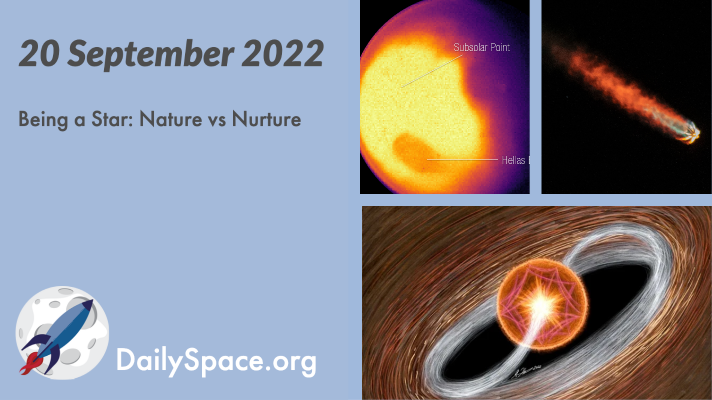
Sep 21, 2022 | Active Galaxies, Daily Space, Earth, Enceladus, ESA, Globular Cluster, Jupiter, JWST, Mars, Moon, Rockets, Saturn, Sky Watching, Spacecraft, SpaceX, Starlink, Stars, The Sun
Asteroseismologists are combining data from TESS, Kepler, and eventually, JWST to study stellar oscillations in ‘infant’ stars, with the goal of creating new models for how such young stars form and evolve over time. Plus, JWST images Mars, Hubble images stars, and SpaceX manages to launch another Starlink mission in spite of weather delays.
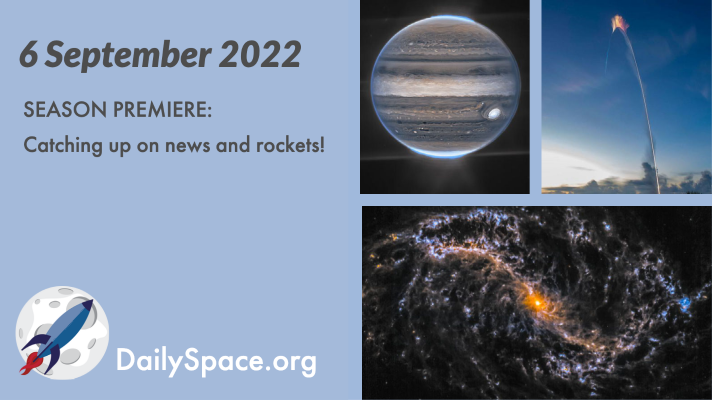
Sep 7, 2022 | Artemis, Blue Origin, Cosmology, Crewed Space, Daily Space, ESA, Exoplanets, Galaxies, ISRO, Jupiter, JWST, Mars, Mars 2020, Perseverance, Rocket Lab, Rockets, Space China, Space Policy, SpaceX, Starlink, Stars, The Sun
As we return from our summer hiatus, we are back with a rundown of some of the stories that came out during the break. On the planetary front, JWST has been taking amazing images and learning about exoplanets. On the astrophysics front, we’ve got stories on dark matter and Betelgeuse. And there were thirty orbital launches, including a whole lot of Starlinks… but not including Artemis.
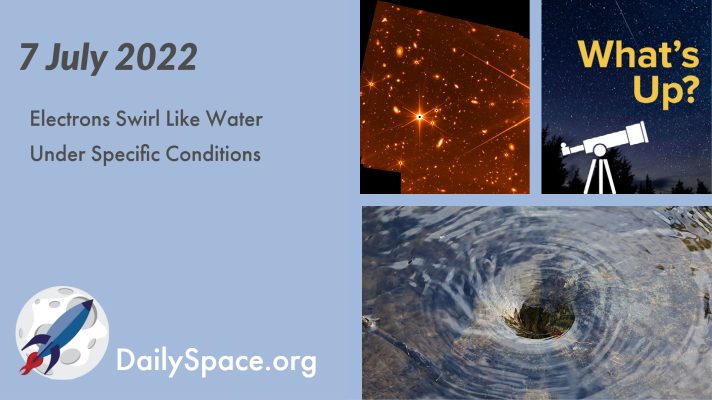
Jul 8, 2022 | Daily Space, Dark Matter, JWST, Moon, Observatories, Physics, Science, SETI, Sky Watching, Spacecraft, The Sun
Using etched tungsten ditelluride at nearly absolute zero, scientists have observed electrons swirling around like whirlpools, behaving as a fluid. The methods could be used to design low-energy devices. Plus, eavesdropping on aliens, machine learning on solar data, and some new observatories are in the works.
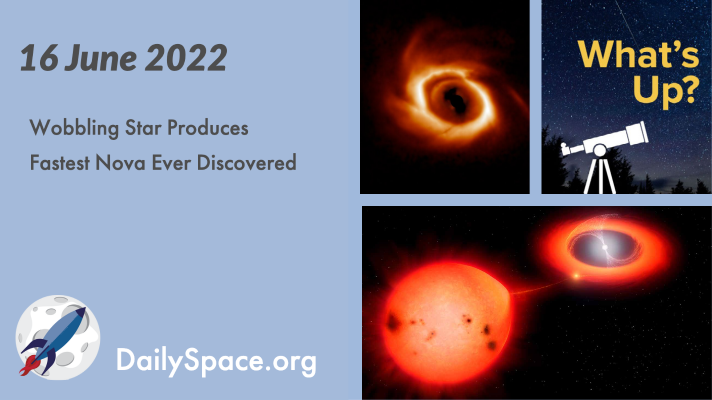
Jun 17, 2022 | AAS, Asteroids, Daily Space, Earth, Exoplanets, Nebulae, Sky Watching, Spacecraft, Star Forming Region, Supernovae, The Sun, White Dwarfs
Observations of V1674 Hercules reveal a nova produced by the white dwarf star that dimmed in only one day. Additionally, the strange star wobbles every 501 seconds, producing flashes in visible and X-ray light. Plus, more results from the 240th meeting of the American Astronomical Society, a farewell to SOFIA, and What’s Up is the June solstice.
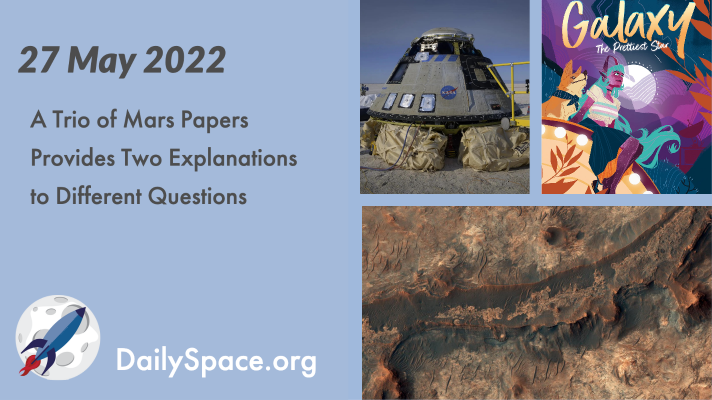
May 31, 2022 | Crewed Space, Daily Space, Earth, ESA, Mars, Perseverance, Review, Rockets, The Sun
Today, we take a look at three recent papers attempting to explain various phenomena on Mars. One uncovers the cause of discrete aurorae. Another explains the martian haze. And a third actually ends up with more questions than answers. Plus, Boeing’s OFT-2 returns to Earth, ESA’s Solar Orbiter makes its closest approach, and Dr. Pamela reviews the new graphic novel “Galaxy: The Prettiest Star” by Jadzia Axelrod.

May 25, 2022 | Daily Space, Earth, Fast Radio Bursts, Galaxies, Lucy, Neutron Stars / Pulsars, Planetary Nebulae, Spacecraft, The Sun
Fast, strong magnetic winds caused by quickly rotating pulsars may be accelerating particles like electrons to extremely high-energy states and creating gamma-ray photons in their wake. Plus, missions close to home, large and distant objects, some pretty Hubble photos, and laser simulations of fast radio bursts.








 We record most shows live, on Twitch. Follow us today to get alerts when we go live.
We record most shows live, on Twitch. Follow us today to get alerts when we go live.